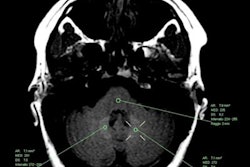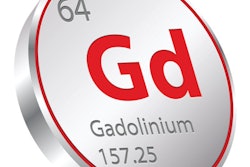
In the coming years, disruptive technologies such as ultrasound and in vitro tests will hit MRI, as well as contrast agent use and development. Soon, we will have cheap smartphone-size ultrasound equipment that will revolutionize and shuffle the imaging market. Most likely, we will be moving toward earlier diagnosis and management, wherever possible, which implies ultrasound, optical or some other sort of high spatial resolution imaging technique -- but not, for instance, ultrahigh-field MRI.
 Dr. Peter Rinck, PhD, is a professor of radiology and magnetic resonance. He is the president of the Council of the Round Table Foundation (TRTF) and the chairman of the board of the Pro Academia Prize.
Dr. Peter Rinck, PhD, is a professor of radiology and magnetic resonance. He is the president of the Council of the Round Table Foundation (TRTF) and the chairman of the board of the Pro Academia Prize.Manufacturers are first and foremost interested in money; this is their raison d'être, the purpose that justifies their existence -- and, basically, there is nothing to criticize about it. The manufacturers are increasingly faced with the question of whether new ideas have any clinical and commercial relevance. They still can try to invent some "relevance." In general, MR research will move away from developing new pulse sequences or new coils; this will even hold for academic research, perhaps with the exception of superconducting materials.
What will be the clinical need for imaging agents when in vitro diagnostics will begin to provide useful information? If you know from in vitro analysis that the patient has a specific disease or condition, what is the role of imaging and what type of imaging will provide the clinical management information needed?
I have been involved in MR contrast agents since 1981, for nearly 40 years. The main question is if there is room for a new agent today or in the future -- and if so, how and why -- when the remaining gadolinium chelates are so universal in terms of their application. Gadolinium extracellular fluid agents are the only ones that have grown into a realistic market size. Thus, it will be extremely difficult to develop a new MR contrast agent that fulfills unsatisfied clinical needs and has a large enough range of application to justify development.
NSF's deep scars
The disaster of the nephrogenic systemic fibrosis (NSF) has left deep scars in the industry. Still, gadolinium agents are safe contrast agents when properly applied -- far safer than, for instance, x-ray contrast agents. It's unlikely that you can find something better than gadolinium that ticks all the boxes in terms of applications, higher safety profile, and potential market size. Getting the market to embrace a new agent will be a slow process as radiologists are conservative and it will take years to grow the markets.
As we have seen with Novartis, for instance, the era of mass production in the pharmaceutical industry is claimed to be over: So-called "personalized medicine" is replacing "one-size-fits-all" pills. I doubt if this holds true for contrast agents. It will be difficult to isolate unmet clinical needs, and the cost and approval processes are exorbitant.
Today's contrast agents on the market were developed for field strengths below 2 tesla; their relaxivity diminishes with increasing magnetic field strength. In the unlikely case that imaging will be performed at ultrahigh fields of 7 tesla or even higher, new classes of contrast agents must be developed for research applications, mostly for animal experiments. Again, costs will be prohibitive.
An interesting approach to new paradigms and elements is the production and distribution of already approved agents that were withdrawn from the market before the gadolinium phobia, such as mangafodipir trisodium (MnDPDP) for pancreas, liver, and cardiac applications and ferumoxtran for the enhancement of metastases. In these cases, approval is relatively simple and distribution might be efficient even by small companies.
New "old" players have entered and will enter the market. Gone yesterday, back here today?
For further reading, see Rinck PA. Contrast agents. In: Rinck PA. Magnetic Resonance in Medicine. A Critical Introduction. 12th ed. Norderstedt, Germany: BoD; 2018:231-255.
Editor's note: This column is based on the Maverinck's opening lecture at the Contrast-Enhanced Biomedical Imaging -- Standing at the Crossroads: 40 Years of MR Contrast Agents meeting, held in Mons, Belgium, in May 2019. His round-up from the meeting will follow soon.
Dr. Peter Rinck, PhD, is a professor of radiology and magnetic resonance and has a doctorate in medical history. He is the president of the Council of the Round Table Foundation (TRTF) and the chairman of the board of the Pro Academia Prize.
The comments and observations expressed herein do not necessarily reflect the opinions of AuntMinnieEurope.com, nor should they be construed as an endorsement or admonishment of any particular vendor, analyst, industry consultant, or consulting group.




















